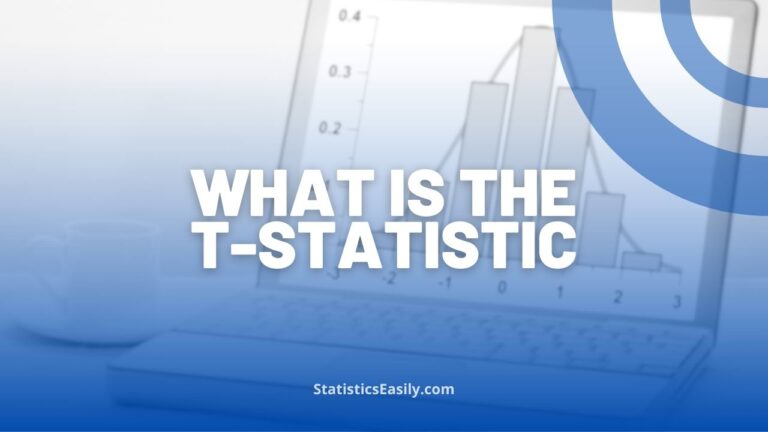Navigating the Basics of Generalized Linear Models: A Comprehensive Introduction
You will learn the fundamentals of Generalized Linear Models and their transformative role in data analysis.
Introduction
Generalized Linear Models (GLMs) represent a cornerstone in the landscape of statistical analysis, extending the capabilities of traditional linear models to accommodate a variety of data distributions beyond the conventional normal distribution. This adaptability makes GLMs an indispensable tool in the arsenal of data scientists and statisticians, enabling the exploration and modeling of complex relationships within data across various disciplines.
At the heart of GLMs lies the ability to link the expected value of the response variable to the linear predictors through a suitable link function, thus accommodating binary, count, continuous, and other data types. This flexibility allows researchers to apply GLMs to various research questions, from predicting binary outcomes in medical research to modeling count data in ecology.
This article aims to demystify the concept of Generalized Linear Models for those new to the field. We strive to provide a foundational understanding that emphasizes clarity and accessibility, ensuring that beginners can grasp the essential principles and applications of GLMs. By the end of this guide, readers will understand the basic framework of GLMs and appreciate their significance and utility in transforming raw data into meaningful insights, thereby uncovering the inherent truth and beauty in statistical analysis.
Through a careful exposition of the fundamentals, complemented by practical examples and guided analyses, we endeavor to illuminate the path for novices to embark on their journey into the realm of Generalized Linear Models, thereby equipping them with the knowledge to harness the power of GLMs in their respective fields.
Highlights
- GLMs extend linear regression for various data types.
- Key components: Random, Systematic, and Link function.
- Versatile in fields from biology to finance.
- Step-by-step guide for setting up your first GLM analysis.
- Best practices to ensure accurate, reliable results.
Ad Title
Ad description. Lorem ipsum dolor sit amet, consectetur adipiscing elit.
Understanding the Generalized Linear Models Basics
Generalized Linear Models (GLMs) are a pivotal extension of traditional linear regression models, designed to handle a broader spectrum of data types and distributions. Unlike their predecessor, which presumes a continuous dependent variable following a normal distribution, GLMs embrace versatility by accommodating various response variable distributions, such as binomial, Poisson, and Gaussian. This adaptability allows GLMs to be applied to data that exhibit characteristics like non-constant variance or non-linearity, thus broadening the scope of statistical analysis.
The distinction between GLMs and traditional linear regression models primarily lies in their structure and assumptions. Linear regression models are constrained by the assumption of linearity between the dependent and independent variables, a constant variance of errors (homoscedasticity), and a continuous outcome variable. GLMs, however, transcend these limitations by incorporating a link function, which connects the linear predictor to the mean of the response variable’s distribution. This function enables modeling relationships that are not necessarily linear and allows for the variance to be a function of the predicted value.
Suitable data types and research questions for GLMs are remarkably diverse, highlighting the method’s flexibility and utility across various fields. For instance, in medical research, GLMs can be utilized to examine the relationship between patient characteristics (e.g., age, treatment) and binary outcomes such as the presence or absence of disease (using logistic regression, a type of GLM). In ecology, GLMs may be employed to model count data, like the number of species in different habitats, using Poisson regression. This versatility underscores GLMs’ capacity to provide insightful analyses across many research questions, ranging from the probability of event occurrence to the frequency of event counts.
Generalized Linear Models revolutionize how we approach statistical analysis, offering a robust framework capable of handling the complexity and variety inherent in real-world data. By extending the principles of linear regression and embracing a broader array of distributions, GLMs empower researchers to uncover meaningful insights and patterns in datasets that defy traditional modeling techniques, thereby advancing the pursuit of truth and understanding in scientific inquiry.
Components of Generalized Linear Models
Generalized Linear Models (GLMs) are underpinned by three fundamental components that collectively define their structure and functionality: the random component, the systematic component, and the link function. Understanding these components is crucial for effectively applying GLMs to statistical analysis.
Random Component
The random component of GLMs pertains to the distribution of the response variable Y. This component assumes that each observation of Y is generated from a particular distribution from the exponential family, such as normal, binomial, Poisson, or gamma distributions. For instance, in a logistic regression model (a type of GLM), the response variable follows a binomial distribution, reflecting the binary nature of the data, like success/failure or presence/absence outcomes.
Systematic Component
The systematic component encompasses the predictors or independent variables X1,X2,…,Xn. It represents the combination of these variables through a linear predictor η=β0+β1X1+β2X2+…+βnXn. This linear equation models the expected value of Y based on the predictors. For example, in modeling the impact of various drugs on patient recovery time, the predictors might include drug dosage and administration frequency, systematically influencing the response variable.
Link Function
The link function, g(⋅), connects the random and systematic components by relating the expected value of Y (denoted as μ) to the linear predictors. This function ensures the model predictions remain within the range suitable for the response variable’s distribution. For a logistic regression model, the link function is the logit function, g(μ)=log(μ/1−μ), which maps the probability of the occurrence of an event (ranging between 0 and 1) to the entire real line, making it suitable for linear modeling.
Simple Example Illustrations:
Random Component Example: Consider a study on plant survival where each plant is either alive (1) or dead (0) after a certain period. The response variable (survival status) follows a binomial distribution suitable for the random component of a GLM.
Systematic Component Example: In studying the effect of fertilizer and water on plant growth, the amount of fertilizer and water are the predictors in the systematic component. The linear predictor might be η=β0+β1×Fertilizer+β2×Water.
Link Function Example: For the plant survival study, the logit link function could be used to relate the linear predictor to the log odds of survival, ensuring that the model output lies between 0 and 1, corresponding to the probability of survival.
By integrating these components, GLMs provide a powerful and flexible framework for modeling diverse data types, enabling researchers to extract meaningful insights from complex datasets.
Applications of Generalized Linear Models
Generalized Linear Models (GLMs) have found widespread application across diverse fields, underscoring their versatility and critical importance in statistical analysis. By accommodating various data types and relationships, GLMs enable researchers and practitioners to model and interpret complex phenomena more flexibly and accurately.
Medical Research
In the medical field, GLMs are instrumental in analyzing patient data to understand the factors influencing health outcomes. For instance, logistic regression, a type of GLM, is frequently used to study the relationship between patient characteristics (e.g., age, pre-existing conditions) and binary outcomes such as the presence or absence of a disease. This application is vital for risk assessment, guiding treatment decisions, and understanding disease etiology.
Environmental Science
Environmental scientists apply GLMs to model the impact of environmental factors on various biological responses. For example, Poisson regression, another GLM variant, is used to analyze count data, such as the number of species in different habitats, providing insights into biodiversity and conservation efforts.
Financial Sector
In finance, GLMs help predict default probabilities, analyze claim frequencies, and model claim sizes in insurance, contributing to risk assessment and financial decision-making. The flexibility of GLMs in handling different data types makes them particularly useful for the complex models often encountered in financial analyses.
Marketing and Consumer Behavior
Marketers utilize GLMs to understand consumer preferences and predict behaviors such as purchase decisions. Businesses can tailor their strategies to better meet market demands by analyzing how different factors influence consumer actions.
Social Sciences
In social sciences, GLMs examine the relationship between socio-economic factors and outcomes such as employment status, educational attainment, or voting behavior. These models provide valuable insights into social trends and policy impacts.
Real-World Case Study Example:
A notable application of GLMs can be seen in a study examining the factors affecting patient adherence to medication regimens in chronic diseases. Researchers used logistic regression to analyze how age, medication side effects, and patient education level influenced the likelihood of medication adherence. The study revealed significant predictors and provided a basis for targeted interventions to improve adherence rates, showcasing the practical utility of GLMs in addressing real-world health challenges.
Getting Started with Generalized Linear Models
Embarking on Generalized Linear Models (GLMs) analysis can seem daunting to beginners. However, user-friendly statistical programming languages like R and Python make the process approachable and engaging. This section provides a straightforward guide to conducting a basic GLM analysis using R and Python, complete with a simple example to illustrate the process.
Setting the Stage: A Simple Example
Consider a dataset where we aim to analyze the effect of a binary predictor (e.g., treatment: yes/no) on a binary outcome (e.g., success/failure). This scenario is perfect for logistic regression, a type of GLM designed for binary outcomes.
Using R for GLM Analysis
R is renowned for its statistical capabilities and extensive libraries for data analysis. To perform a GLM analysis in R, you can use the base function ‘glm()’.
Step-by-Step Guide:
1. Loading Data: Begin by loading your dataset into R. For demonstration, we’ll create a simple dataset inline:
data <- data.frame(treatment = c(1, 1, 0, 0, 1, 0, 1, 0, 1, 0),
success = c(1, 0, 0, 1, 1, 0, 1, 0, 1, 1))
2. Model Fitting: Use the ‘glm()’ function to fit a logistic regression model, specifying the family as binomial to indicate a logistic regression.
model <- glm(success ~ treatment, family = binomial, data = data)
3. Result Interpretation: Summarize the model to view the coefficients and assess the impact of treatment.
summary(model)
Using Python for GLM Analysis
Python’s ‘statsmodels’ library offers extensive functionalities for statistical modeling, including GLMs.
Step-by-Step Guide:
1. Preparing the Environment: Ensure you have ‘statsmodels’ installed and import necessary libraries:
import numpy as np import statsmodels.api as sm
2. Loading Data: Similar to R, define your dataset within Python:
treatment = np.array([1, 1, 0, 0, 1, 0, 1, 0, 1, 0]) success = np.array([1, 0, 0, 1, 1, 0, 1, 0, 1, 1]) treatment = sm.add_constant(treatment) # Adds a constant term to the predictor
3. Model Fitting: Fit the GLM using ‘statsmodels’ with the logistic link function:
model = sm.GLM(success, treatment, family=sm.families.Binomial()).fit()
4. Result Interpretation: Print the summary to interpret the model’s outcomes:
print(model.summary())
Interpreting the Results
After fitting a logistic regression model using either R or Python, the output summary presents several key pieces of information, including the coefficients, standard errors, z-values (or t-values in some contexts), and p-values for each predictor variable, including the intercept.
Understanding the Coefficients: The coefficients in a logistic regression model represent the change in the log odds of the outcome for a one-unit change in the predictor variable, holding all other predictors constant. In the context of our example:
Intercept (Constant Term): The intercept represents the log odds of success when all predictors are 0. In a model with a binary predictor like our treatment variable, the intercept can be thought of as the log odds of success for the control group (treatment = 0).
Treatment Coefficient: This coefficient indicates how the log odds of success change when the treatment is applied (treatment changes from 0 to 1). A positive value suggests that the treatment increases the log odds of success, implying a higher probability of success when the treatment is given. Conversely, a negative value would suggest that the treatment decreases the log odds of success.
Significance of the Coefficients: The p-value of each coefficient tests the null hypothesis that the coefficient equals zero (no effect). A small p-value (typically ≤ 0.05) indicates we can reject the null hypothesis, suggesting the predictor has a statistically significant effect on the outcome.
Example Interpretation: Let’s assume the treatment coefficient in our model summary is positive and statistically significant:
Positive Treatment Effect: If the treatment coefficient is positive (e.g., 0.5) and statistically significant (p-value < 0.05), we interpret this as the treatment increasing the likelihood of success. Specifically, the treatment increases the log odds of success by 0.5 units compared to the control group.
Odds Ratio: Exponentiating the treatment coefficient gives us the odds ratio (OR). For a coefficient of 0.5, OR = e0.5 ≈ 1.65. This means the odds of success are 1.65 times higher in the treatment group than in the control group.
Practical Implications: In practical terms, a positive and significant treatment effect suggests that the treatment increases the chances of success. Given its positive impact, decision-makers might use this information to advocate for broader implementation of the treatment.
By carefully examining the coefficients and their significance, researchers can draw meaningful conclusions about the influence of predictors on the outcome, guiding evidence-based decision-making and policy formulation.
Best Practices and Common Pitfalls
Embarking on the Generalized Linear Models (GLM) analysis journey requires a blend of methodical data preparation, astute model selection, and vigilant interpretation of results. This section delves into best practices that foster successful GLM analyses and identifies common pitfalls to avoid, ensuring a smooth and insightful analytical experience.
Best Practices for GLM Analysis
1. Thorough Data Preparation: Begin with meticulously examining your data. Ensure it is clean, correctly formatted and devoid of outliers or missing values that could skew the analysis. For categorical variables, consider appropriate encoding techniques.
2. Understanding Data Distribution: Before model selection, scrutinize the distribution of your response variable. The choice of GLM (e.g., logistic, Poisson, or binomial regression) hinges on this distribution, whether binary, count, or continuous.
3. Variable Selection: Carefully select predictor variables based on theoretical understanding and preliminary data exploration. Avoid including too many predictors, which can lead to overfitting.
4. Model Diagnostics: After fitting your GLM, conduct diagnostic checks to ensure the model assumptions hold. This includes examining residuals, checking for overdispersion, and confirming that the link function is appropriately specified.
5. Software Proficiency: Familiarize with statistical software and tools like R or Python. Leverage their extensive libraries and resources for GLM analysis and stay updated with the latest packages and functions.
Common Pitfalls and How to Avoid Them
1. Ignoring Model Assumptions: One of the most frequent oversights is the neglect of GLM assumptions. Ensure that your data adheres to the assumptions of the chosen GLM variant to avoid biased results.
2. Overfitting the Model: Including too many predictors or overly complex interactions can lead to a model that performs well on training data but poorly on new, unseen data. Use techniques like cross-validation to assess model generalizability.
3. Underfitting the Model: Conversely, a too simple model might fail to capture the underlying data structure, leading to inadequate predictions. Strike a balance between model complexity and interpretability.
4. Misinterpretation of Coefficients: GLM coefficients can be challenging to interpret, particularly when understanding the scale (e.g., log-odds in logistic regression). Take time to translate these coefficients into meaningful insights correctly.
5. Inadequate Model Validation: Relying solely on the training dataset for model validation can be misleading. Utilize a separate test dataset to evaluate model performance and validate your findings.
Ad Title
Ad description. Lorem ipsum dolor sit amet, consectetur adipiscing elit.
Conclusion
As we conclude this comprehensive exploration of Generalized Linear Models (GLMs), it’s clear that GLMs are not just statistical tools but gateways to deeper understanding and interpretation of complex data across various fields. From the foundational concepts to the nuanced applications and best practices, GLMs stand out as indispensable instruments in the statistical analysis repertoire.
Key Takeaways:
Flexibility and Versatility: GLMs extend traditional linear models to accommodate a wide array of data distributions, making them adaptable to numerous research questions and data types.
Insightful Analysis: By linking the expected value of the response variable to the predictors through an appropriate link function, GLMs facilitate a nuanced understanding of underlying patterns and relationships in data.
Widespread Applications: From medical research and environmental science to finance and social sciences, GLMs’ applicability spans a broad spectrum, underscoring their importance in empirical research and decision-making.
Empowering Beginners: With user-friendly statistical software like R and Python, GLMs are accessible to beginners, empowering them to uncover meaningful insights and contribute to their respective fields.
Recommended Articles
Delve deeper into data science with our curated selection of articles on statistical models and data analysis techniques. Explore now to enhance your knowledge and skills!
- Navigating the Basics of Generalized Linear Models: A Comprehensive Introduction
- Generalized Linear Model (GAM) Distribution and Link Function Selection Guide
- Understanding Distributions of Generalized Linear Models
- The Role of Link Functions in Generalized Linear Models
Frequently Asked Questions (FAQs)
Q1: What are Generalized Linear Models (GLMs)? GLMs are a flexible generalization of ordinary linear regression that allows for response variables to have error distribution models other than a normal distribution.
Q2: How do GLMs differ from traditional linear models? Unlike conventional linear models that assume a normal distribution, GLMs are adaptable to various data types, including binary, count, and continuous.
Q3: What are the components of a GLM? A GLM consists of three components: the random component (data distribution), the systematic component (predictors), and the link function (which connects the mean of the distribution with the predictors).
Q4: In which fields are GLMs applied? GLMs are widely used across numerous fields, such as biology, medicine, engineering, and social sciences, due to their flexibility in handling different data types.
Q5: What is the link function in a GLM? The link function defines the relationship between the linear predictor and the mean of the distribution function. Standard link functions include logit, probit, and identity.
Q6: How do you select the appropriate GLM for your data? Selecting a GLM involves understanding your data type and distribution, the relationship between variables, and the research question you aim to answer.
Q7: Can GLMs handle categorical predictors? Yes, GLMs can accommodate numerical and categorical predictors, making them suitable for various research questions.
Q8: What are some common pitfalls in GLM analysis? Common pitfalls include overfitting the model, ignoring assumptions, and misinterpreting the coefficients.
Q9: How do you interpret GLM coefficients? GLM coefficients represent the change in the log odds of the outcome for a one-unit change in the predictor variable, holding other variables constant.
Q10: Are there any software packages for GLM analysis? Several software packages offer GLM analysis capabilities, including R, Python (with libraries like StatsModels and scikit-learn), SAS, and SPSS.








